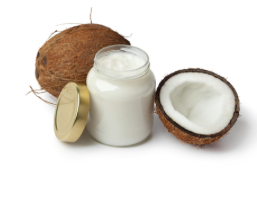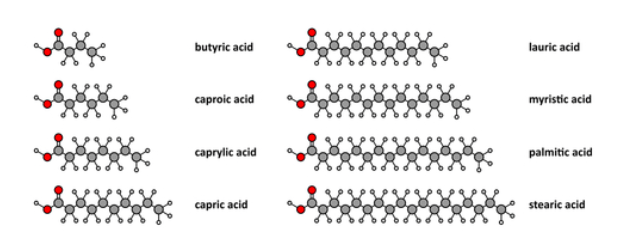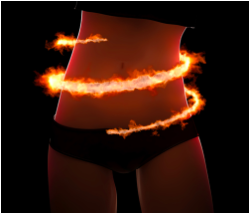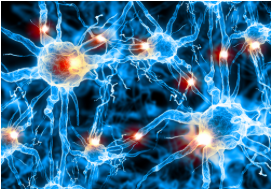The Effects of Carbohydrates on Your Workout – Part 1: Pre Workout
For many of us, carbohydrates seem to be the most important and most debated macronutrient when speaking on building muscle. ...

For many of us, carbohydrates seem to be the most important and most debated macronutrient when speaking on building muscle. ...
In preparation for writing this article, I wanted to see what exactly was written out on the web when it ...
Minerals like zinc and magnesium are necessary for us to properly use energy, detoxify our bodies, and hundreds of other ...
The importance of fibre as an essential nutrient is often overlooked and the daily requirements of obtaining enough presents a ...
If you’re wondering around the health section at your local grocer, it will be hard not to find a product ...
A common nutrition plan we use with clients involves rotating low carb days with higher carb days. Low carb days ...
Satellite Cell Activation: A Necessary Muscle Growth Component… How You Can Stimulate Yours for Maximum Muscle Gains! The regenerative, healing ...
By Roland Pankewich If you have read the first installment (Read Part 1 Here) you were introduced to the idea ...
Everybody's familiar with testosterone, the grand daddy hormone most synonymous with both muscle and manhood. Today we provide a comprehensive ...
Grocery shopping can be a daunting task. Organic, cage-free, grass-fed, non-GMO, certified, fortified, petrified…there are so many choices and so ...
There is, without a doubt, a no more difficult area of the body to develop muscle size and strength, than ...
For many of us, carbohydrates seem to be the most important and most debated macronutrient when speaking on building muscle. ...
 Not all fats are created equal. Put simply, there are good fats and bad fats: the so called unsaturated and saturated types, both of which can be further subdivided into superior and inferior forms.
Not all fats are created equal. Put simply, there are good fats and bad fats: the so called unsaturated and saturated types, both of which can be further subdivided into superior and inferior forms.
Among the bad fats we also have the trans-fats; unsaturated fats which are created artificially via the hydrogenation process (whereby hydrogen is added to vegetable oil to make it solid at room temperature) and used in baked and other convenience goods. Because they have been shown to raise bad (LDL) cholesterol and lower good (HDL) cholesterol these are deemed to be the most harmful of fats. Then there are the Medium-Chain Triglycerides (MCTs), saturated fats produced from coconut oil and palm kernels, which are more readily absorbed and utilized for energy compared to other fat sources.
Many consider the MCTs to be a superior fat for bodybuilders looking to increase metabolic functioning, reduce fat accumulation, enhance thermogenesis, control appetite, and boost energy levels. Before we get to the proposed benefits of incorporating MCTs into your bodybuilding regime, a quick description of their composition and how they work is in order.
 Different fat types are comprised of specific ratios of fatty acids. Those found in MCTs are of the medium chain variety (by combining three fatty acids with the sugar alcohol glycerol a triglyceride is formed). Fatty acids are distinguishable by their number of carbon ‘chains.’ With MCTs, 2-3 of the fatty acids attached to the glycerol backbone (to form a triglyceride) are of medium length (8-12 carbons long), while most other fats (long chain triglycerides – LCTs) contain 12-22 carbon molecules per fatty acid. Just as not all fats are created equal, so too do medium chain fatty acids differ in their structure.
Different fat types are comprised of specific ratios of fatty acids. Those found in MCTs are of the medium chain variety (by combining three fatty acids with the sugar alcohol glycerol a triglyceride is formed). Fatty acids are distinguishable by their number of carbon ‘chains.’ With MCTs, 2-3 of the fatty acids attached to the glycerol backbone (to form a triglyceride) are of medium length (8-12 carbons long), while most other fats (long chain triglycerides – LCTs) contain 12-22 carbon molecules per fatty acid. Just as not all fats are created equal, so too do medium chain fatty acids differ in their structure.
Some of the more common fatty acids found in MCTs, and their corresponding carbon numbers, include: Caprylic Acid (eight carbons); Capric Acid (C10); and Lauric Acid (C12).
 Due to their carbon chain length being shorter compared to other fats, MCTs are absorbed and metabolized faster and are thus prioritized ahead of the more slowly assimilated LCTs (which are digested in the small intestine and require digestive enzymes and bile salts to be properly assimilated). Traditionally used in medicine to enhance fat absorption in those who cannot properly process LCTs, counter obesity, and treat cystic fibrosis, MCTs bypass the normal fat digestion process (they are not converted to fatty acids by the liver and thus do not require bile salts for digestion) and are instead absorbed more directly into the bloodstream to be used as a dense, efficient energy source by the muscles.
Due to their carbon chain length being shorter compared to other fats, MCTs are absorbed and metabolized faster and are thus prioritized ahead of the more slowly assimilated LCTs (which are digested in the small intestine and require digestive enzymes and bile salts to be properly assimilated). Traditionally used in medicine to enhance fat absorption in those who cannot properly process LCTs, counter obesity, and treat cystic fibrosis, MCTs bypass the normal fat digestion process (they are not converted to fatty acids by the liver and thus do not require bile salts for digestion) and are instead absorbed more directly into the bloodstream to be used as a dense, efficient energy source by the muscles.
Odorless, light- yellow in appearance and translucent and liquid at room temperature, MCTs are not stored in fat cells like LCTs but are instead burned by the Krebs cycle (in which chemical energy is rapidly produced in the form of ATP). As a result, blood levels of ketones (acids produced when fats rather than carbs are used for energy) increase, which may, in turn, provide more energy for our brain while increasing mental focus and powering physical exertion. When our diets are lower in carbs and higher in MCTs we produce more ketones; the body responds to decreased blood sugar levels by using these ketones as a major fuel source. The result: we burn fat instead of carbs. In addition, ketones are burned ahead of amino acids, thereby helping to offset muscle catabolism; MCTs also carry amino acids around the body, an action which may, in turn, hasten the assimilation of proteins within muscle tissue.
Because of their fast assimilation and ability to significantly elevate energy levels, MCTs are often used by endurance athletes as a caloric dense, energy-stabilizing fuel source. When carbohydrates must be restricted so as to offset blood sugar fluctuations (for example, during a pre-contest bodybuilding phase) and/or reduce carbohydrate fermentation in the gut, which can result in the malabsorption of micronutrients, bloating and foggy brain, MCTs may provide a suitable alternate energy source. For bodybuilding athletes, the two major advantages of using MCTs over the more traditional LCTs are fat burning and energy production.
Let’s now take a closer look at how these benefits may be achieved through MCT consumption.
Fat loss
Although they behave more like carbohydrates (the body’s preferred energy source) than fats, MCTs do not undergo the elaborate digestion process of either carbs or LTCs. Because of their smaller molecular structure, MCTs are more water soluble, unlike LCTs, which must be dissolved with bile into small fat droplets called micelles. Protein carrier molecules are produced in the small intestine to transport these micelles (combined, these lipoprotein protein/fat complexes are called chylomicrons and are released from the intestine into the lymphatic system where they ultimately reach the bloodstream through the thoracic duct).
 As these fats are circulated through the body, insulin causes them to be absorbed by fat cells and stored as bodyfat. MCTs, in contrast, are shuttled directly to the liver to be burned for immediate energy and are thus not as likely to be deposited as fat.
As these fats are circulated through the body, insulin causes them to be absorbed by fat cells and stored as bodyfat. MCTs, in contrast, are shuttled directly to the liver to be burned for immediate energy and are thus not as likely to be deposited as fat.
Further, by adding MCTs to our meals we may increase the thermogenic effect of the foods we eat (by consuming MCTs prior to eating, the total number of calories burned per meal is significantly elevated). This makes it less likely that the calories eaten in conjunction with the MCTs (which themselves have 10% fewer calories than LCTs) will be stored as bodyfat.
The thermogenic effect of MCTs is likely due to the production of ketones (outlined above) and the metabolic similarities they share with carbohydrates.
Finally, MCTs have been shown to reduce appetite; they promote feelings of satiety to keep us from snacking between meals. Overall calorie consumption has been found to be significantly lower in those who consume a diet high in MCTs (featuring a 2:1 ratio of MCTs to LCTs).
Energy production
Because of their medium chain length, MCTs, compared to LCTs, are more rapidly absorbed by the body and metabolized as fuel. This enhanced metabolic conversion process means that the calories in MCTs can be more efficiently converted into energy to fuel the functioning of our muscles and organs. To be used as fuel, LCTs must be broken down via Carnitine, whereas MCTs (which rapidly cross the double mitochondrial membrane) do not. Whenever MCTs are digested, an excess of acetyl-coA (an enzyme which plays a key role in fatty acid synthesis and degradation) is produced, which, in turn, follows various metabolic pathways to produce ketones in both the mitochondria (via the aforementioned Krebs cycle) and in the cytosol (the liquid found within our cells). This rapid formation of ketone bodies is what leads to our increased energy levels post-MCT consumption. Cellular energy production via MCT consumption is also attributable to the fat burning effect of MCTs.
Brain boosting
 Aside from their fat stripping and energy boosting properties, MCTs have also been shown enhance cognition, as was revealed in a groundbreaking study on older populations with memory impairment. Because the brain preferentially uses glucose for energy, an absence of this fuel source (resulting from insulin resistance and/or suboptimal metabolism) requires an alternative. Enter the ketone bodies. Known for recharging metabolic processes within the brain, the production of ketones can provide an almost immediate improvement in cognitive function. The fastest way to produce a readily available supply of ketones can be achieved through the consumption of MCTs.
Aside from their fat stripping and energy boosting properties, MCTs have also been shown enhance cognition, as was revealed in a groundbreaking study on older populations with memory impairment. Because the brain preferentially uses glucose for energy, an absence of this fuel source (resulting from insulin resistance and/or suboptimal metabolism) requires an alternative. Enter the ketone bodies. Known for recharging metabolic processes within the brain, the production of ketones can provide an almost immediate improvement in cognitive function. The fastest way to produce a readily available supply of ketones can be achieved through the consumption of MCTs.
MCT power
Taken in supplemental form or through whole foods such as coconut and palm kernel oil (dairy products also contain smaller amounts of MCTs), MCTs can boost athletic performance, burn body fat, enhance thermogenesis, increase metabolic efficiency and counteract age-related energy and memory decline. By reducing our carbohydrate intake and preferentially using MCTs as a fuel source (though essential fatty acid intake must remain sufficient for health purposes) we may enjoy their many performance benefits. Start slow (one teaspoon of MCT oil per day for 4-5 days before gradually increasing intake to two tablespoons per day) to determine how you respond to the inclusion of MCTs.
References
Baba, N. Bracco, E., F. Seylar, J. Hashim, S., A. Enhanced thermogenesis and diminished deposition of fat in response to overfeeding with diets containing medium chain triglycerides. J Am Soc Clin Nutrition, 1981, 34: 624.
Bach, A., C. & Babayan, V.K. Medium-chain triglycerides: An update. Am J Clin Nutr, 1982, 36: 950-962.
Fushiki, T. Matsumoto, K. Inoue, K. Kawada, T. Sugimoto, E. Swimming endurance capacity of mice is increased by chronic consumption of medium-chain triglycerides. J Nutr 1995 Mar;125(3):531-9.
Greenberger, N., & Skillman, t., G. Medium chain triglycerides; physiologic considerations and clinical implications. New England Journal of Medicine 1969; 280; 1045
Hainer, V. Kunesova, M. Stich, V. Zak, A. Parizkova J. The role of oils containing triacylglycerols and medium-chain fatty acids in the dietary treatment of obesity. The effect on resting energy expenditure and serum lipids. Cas Lek Cesk 1994 Jun 13;133(12):373-5.
Kaunitz, H. Slanetz, C., A., Johnson, R., E. Babayan, V., K. Garsky, G. Nutritional properties of the triglycerides of medium chain-length. J Am Oil Chem Soc, 1958, 35: 10-13
Lauren C Costantini, Linda J Barr, Janet L Vogel, Samuel T Henderson. Hypometabolism as a therapeutic target in Alzheimer’s disease. BMC Neurosci. 2008 ;9 Suppl 2:S16. Epub 2008 Dec 3. PMID:
Stubbs R., J. Harbron, C., G. Covert manipulation of the ratio of medium- to long-chain triglycerides in isoenergetically dense diets: effect on food intake in ad libitum feeding men. Int J Obes Relat Metab Disord 1996 May;20(5):435-44.
St-Onge, M., P. Mayrsohn, B. O’Keeffe, M. Kissileff, H., R. Choudhury, A. Laferrere, B. Impact of medium and long chain triglycerides consumption on appetite and food intake in overweight men. Eur j Clin Nutr. 2014 Jul 30.
St-Onge M, P., Ross, R. Parsons, W., D. Jones, P., J. Medium-chain triglycerides increase energy expenditure and decrease adiposity in overweight men.
Obes Res. 2003 Mar;11(3):395-402.
Yost, T., J. Eckel, R., H. Hypocaloric feeding in obese women: metabolic effects of medium-chain triglyceride substitution. Am J Clin Nutr 1989 Feb;49(2):326-30.